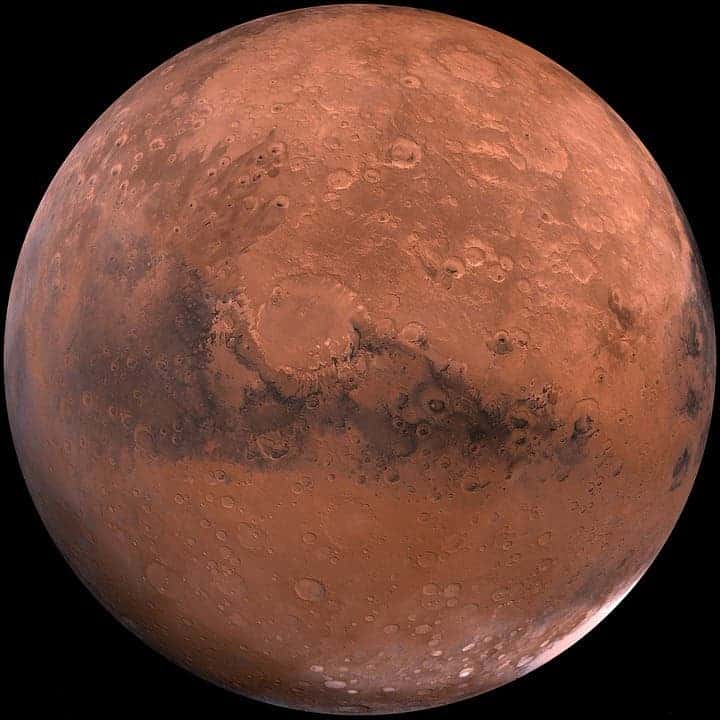New research is helping to improve our understanding of how Mars lost its atmosphere — and how much of it the planet lost.

A new study led by NASA shows that a key tracer used to estimate how much atmosphere the planet lost changes with the temperature and time of day on Mars. The work should help make sense of previous measurements of the tracer, which have found wildly conflicting results. Having an accurate measurement of this tracer — a particular isotope of the oxygen atom — will enable us to estimate whether Mars has ever been habitable and what it was like on its surface.
The air that was
“We know Mars had more atmosphere. We know it had flowing water. We do not have a good estimate for the conditions apart from that — how Earthlike was the Mars environment? For how long?” said Timothy Livengood of the University of Maryland, College Park and NASA’s Goddard Space Flight Center in Greenbelt, Maryland, who led the study.
Even today, Mars has features such as dry riverbeds and mineral compounds that form in liquid water which point to much milder days in its past. One element that’s critical for such a past is a thick atmosphere that could retain enough heat for water to stay liquid on the surface.
However, Mars has lost all that atmosphere today, which transformed its climate from one that could (potentially) nurture life to the dry and freezing environment found by NASA missions such as MAVEN, Curiosity, and the Viking missions of 1976.
Naturally, researchers have a lot of questions regarding the Red Planet’s ancient atmosphere. One way to estimate its nature and properties is to look at oxygen isotopes — lighter isotopes escape into space faster than light ones, so the remaining atmosphere gets enriched in heavier ones.
In Mars’ case, the lighter (and more common) isotope of oxygen is 16O, while the heavier one is 18O. By analyzing the relative amount of each of these isotopes, researchers can get a good idea of how thick the atmosphere was on early Mars.
The glaring flaw in this approach is that the 18O/16O ratio has been measured several times, producing various readings. The new paper provides a way to resolve this discrepancy by showing that the ratio can change during the Martian day.
“Previous measurements on Mars or from Earth have obtained a variety of different values for the isotope ratio,” said Livengood. “Ours are the first measurements to use a single method in a way that shows the ratio actually varying within a single day, rather than comparisons between independent devices.”
“In our measurements, the isotope ratio varies from being about 9% depleted in heavy isotopes at noon on Mars to being about 8% enriched in heavy isotopes by about 1:30pm compared to the isotope ratios that are normal for Earth oxygen.”
This range of ratios, they explain, is consistent with previously reported measurements. This suggests that those measurements were corrent, but disagreed because the dynamics of the Martian atmosphere are more complex than we assumed.
These ratio changes throughout the day are likely a routine occurrence caused by changes in ground temperature, the team explains. Molecules with heavier isotopes likely stick to cold surface grains at night more than the lighter isotopes which are freed (thermally desorbed) as the surface warms up during the day.
As Mars’ atmosphere is mostly made up of carbon dioxide (CO2), the team studied oxygen isotopes bound up in CO2 molecules. For the observations, they used the Heterodyne Instrument for Planetary Winds and Composition developed at NASA Goddard, currently installed at the NASA Infrared Telescope Facility on Mauna Kea, Hawaii.
“While trying to understand the broad spread in estimated isotope ratios that we retrieved from the observations, we noticed that they were correlated with the surface temperature that we also obtained,” said Livengood. “That was the insight that set us on this path.”
The paper “Evidence for diurnally varying enrichment of heavy oxygen in Mars atmosphere” has been published in the journal Icarus.






